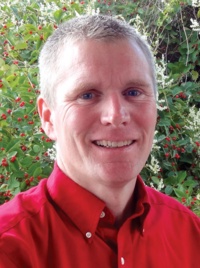W. James Steenburgh
Next year marks the beginning of AMS’s second century, and there has never been a more exciting time to be a meteorologist. Technologies enhancing our access to environmental information are expanding rapidly. Spaceborne and ground-based remote sensing continue to transform our view of the world and ability to predict hazardous weather and climate events. Operational forecast systems are running at cloud-permitting grid spacings, with research simulations of cloud and boundary layer processes now running at remarkably high resolution. Our profession has never had greater capability to inform policy, to provide advanced warning for hazardous weather and climate events, to provide services for weather-sensitive industries and applications, and to conduct the transformative research necessary to improve the prediction of and resiliency to environmental hazards.
It would be my honor to serve you on the AMS Council. I believe that AMS plays a critical role in advancing our profession by bringing together the public, private, and academic sectors; publishing high-quality, peer-reviewed journals; preparing scientists to engage with decision-makers; and hosting a remarkably diverse suite of conferences and symposia. Having taught and advised students for more than 20 years, I consider the Student Conference, which provides a remarkable professional development opportunity for young scientists, to be the crown jewel of AMS conferences.
Entering its second century, I envision an AMS that is increasingly broad and interdisciplinary. I favor an AMS that is more adaptive and inclusive, prepares students and early-career scientists for a future of profound change, pursues stronger connections with other disciplines, and addresses the challenges of science education and communication in an era of vast weather and climate information and misinformation. I would encourage the Society to integrate its ethics and integrity guidelines into a unified document that not only establishes high standards, but also serves as a guide for members confronting twenty-first century ethical dilemmas. Finally, I would be an advocate for maintaining high journal standards and ensuring an affordable, diverse conference mix that includes specialty conferences.
W. James Steenburgh
W. James “Jim” Steenburgh is a professor of atmospheric sciences at the University of Utah. He received his B.S. in meteorology from The Pennsylvania State University and his Ph.D. in atmospheric sciences from the University of Washington. He joined the faculty at the University of Utah in 1995 and was department chair from 2005 to 2011. He has also been a visiting professor at the University at Albany, State University of New York, and will be a Fulbright Visiting Professor at the University of Innsbruck beginning in March 2019.
Steenburgh’s research and teaching interests span mountain weather and climate, orographic and lake-effect precipitation, and weather analysis and forecasting. He has published more than 65 peer-reviewed research articles and book chapters. He served as head of the mesoscale modeling group for the 2002 Olympic Winter Games in Salt Lake City, earning an outstanding service award from the National Weather Service Western Region. In 2007, he led preparation of the first summary of potential impacts of climate change on Utah requested by the governor’s office. For many years, he served on the UCAR/Unidata User’s and Policy Committees. He received his college’s Outstanding Teaching Award in 2001.
Steenburgh attended the AMS Summer Policy Colloquium in 2003, served on the AMS Committee on Mountain Meteorology, and served as cochair for the 2002 AMS Mountain Meteorology Conference in Park City, Utah. He has also been an associate editor of Weather and Forecasting and Monthly Weather Review.
Steenburgh’s passion for meteorology and snow is abundantly evident in his book Secrets of the Greatest Snow on Earth, a No. 1 Amazon Skiing Best Seller, and his blog, Wasatch Weather Weenies, which has garnered more than 2.5 million page views. In 2017, he received the Charles L. Hosler Alumni Scholar Medal from Penn State’s College of Earth and Mineral Sciences for contributions to the development of science through research, teaching, and administrative leadership.
